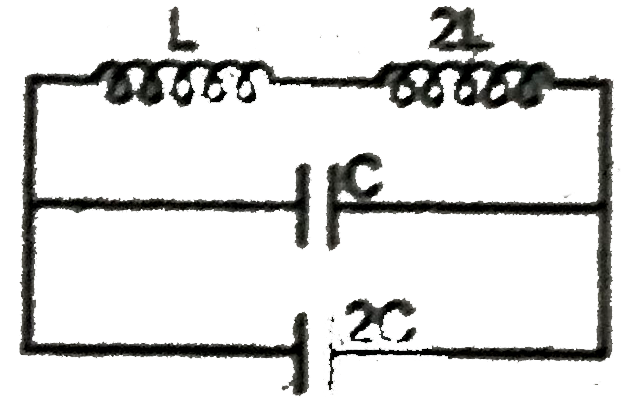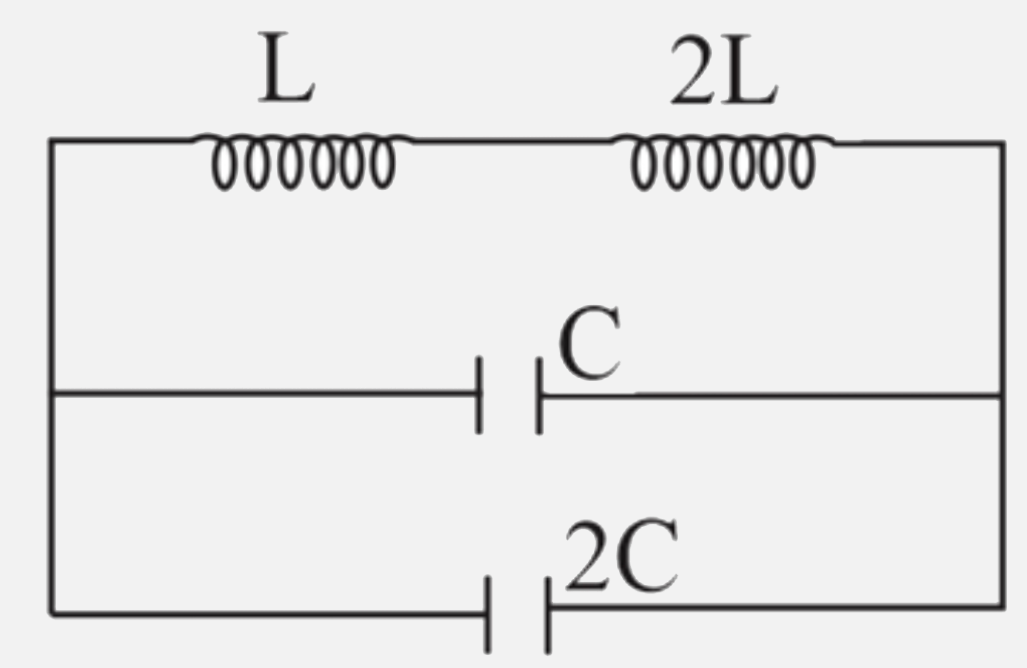STATEMENT-1 : A resistor opposes the flow of current .
and
STATEMENT-2 : An inductor opposes change in strength of current.
Statement-1 is True, Statement-2 is True, Statement-2 is a correct explanation for Statement-1
Statement-1 is True, Statement-2 is True, Statement-2 is NOT a correct explanation for Statement-1
Statement-1 is True, Statement-2 is False
Statement-1 is False, Statement-2 is True
The correct Answer is:B
To analyze the statements provided, we will evaluate each statement step by step.
Step 1: Evaluate Statement 1
Statement 1: A resistor opposes the flow of current.
- Explanation: A resistor is a component in an electrical circuit that resists the flow of electric current. According to Ohm's Law, the relationship between voltage (V), current (I), and resistance (R) is given by the formula:
I=VR
Here, if the resistance (R) increases, the current (I) decreases for a constant voltage (V). This indicates that the resistor indeed opposes the flow of current.
- Conclusion: Statement 1 is True.
Step 2: Evaluate Statement 2
Statement 2: An inductor opposes change in strength of current.
- Explanation: An inductor is a passive electrical component that stores energy in a magnetic field when electric current flows through it. The behavior of an inductor can be described by the formula:
E=−Ldidt
where E is the induced electromotive force (emf), L is the inductance, and didt is the rate of change of current with respect to time. The negative sign indicates that the induced emf opposes the change in current. Thus, if the current is increasing or decreasing, the inductor will generate an opposing voltage to resist that change.
- Conclusion: Statement 2 is True.
Step 3: Determine the Relationship Between the Statements
- Analysis: Both statements are true, but they refer to different components in an electrical circuit (a resistor and an inductor). Therefore, while both statements are true, Statement 2 does not provide a correct explanation for Statement 1.
Final Conclusion
- Answer: Statement 1 is true, Statement 2 is true, but Statement 2 is not a correct explanation of Statement 1.
Statement 1: A resistor opposes the flow of current.
I=VR
Here, if the resistance (R) increases, the current (I) decreases for a constant voltage (V). This indicates that the resistor indeed opposes the flow of current.
Statement 2: An inductor opposes change in strength of current.
E=−Ldidt
where E is the induced electromotive force (emf), L is the inductance, and didt is the rate of change of current with respect to time. The negative sign indicates that the induced emf opposes the change in current. Thus, if the current is increasing or decreasing, the inductor will generate an opposing voltage to resist that change.
- Analysis: Both statements are true, but they refer to different components in an electrical circuit (a resistor and an inductor). Therefore, while both statements are true, Statement 2 does not provide a correct explanation for Statement 1.
- Answer: Statement 1 is true, Statement 2 is true, but Statement 2 is not a correct explanation of Statement 1.
Topper's Solved these Questions
- ALTERNATING CURRENT BOOK - AAKASH INSTITUTE ENGLISHCHAPTER - ALTERNATING CURRENT EXERCISE - Assignment (Section - F) (Matrix- Match Type Questions)
2 Videos
- ALTERNATING CURRENT BOOK - AAKASH INSTITUTE ENGLISHCHAPTER - ALTERNATING CURRENT EXERCISE - Assignment (Section-G) (Integer Answer Type Questions)
2 Videos
- ALTERNATING CURRENT BOOK - AAKASH INSTITUTE ENGLISHCHAPTER - ALTERNATING CURRENT EXERCISE - Assignment (Section - D) (Linked Comprehension Type Questions)
3 Videos
- ATOMSBOOK - AAKASH INSTITUTE ENGLISHCHAPTER - ATOMSEXERCISE - ASSIGNMENT SECTION J (Aakash Challengers )
5 Videos
Similar Questions
STATEMENT-1: As we move across a resistor in the direction of current, current decreases,
and
STATEMENT-2 : As we move across a resistor in the direction of current , potential decreases.
View SolutionSTATEMENT-1 : As the drift velocity increases, the current flowing through the conductor decreases,
and
STATEMENT-2 : The current flowing through a conductor is directly proportional to drift velocity.
View SolutionSTATEMENT -1 : Friction always opposes motion .
STATEMENT - 2 : Lesser the friction on a surface it is easier to walk on it.
STATEMENT -3 : Soles of shoes gets flat due to friction .
View SolutionIf 0.1 J of energy is stored for the flow of the current of 0.2 A in an inductor, then its inductance value (in H) is
View SolutionSTATEMENT-1 : When the plates of a charged capacitor are connected to a resistor, a current starts flowing in the resistor.
and
STATEMENT-2 : A charged capacitor acts as a battery of steady emf.
View SolutionSTATEMENT - 1 : When the current decreases in a conducting loop placed co-axially with a similar loop without current, they attract each other.
and STATEMENT - 2 : As the current in one loop decreases, an induced current starts flowing, in same sense, in the other loop.
View SolutionThe frequency of oscillation of current in the inductor is:

View SolutionThe frequency of oscillation of current in the inductor is -

View SolutionSTATEMENT - 1 : Whenever there is a change in flux linked with a coil in a circuit, an induced current is set up in it.
and
STATEMENT - 2 : Whenever there is a change in flux linked with a coil in a circuit, an induced emf is set up in it.
View SolutionEach question contains STATEMENT-1 (Assertion) and STATEMENT-2( Reason).
Examine the statements carefully and mark the correct answer according to the instruction given below:
STATEMENT-1: The physical equilibrium is not static but dynamic in nature.
STATEMENT-2: The physical equilibrium is a state in which two opposing process are proceeding at the same rate.
View Solution
